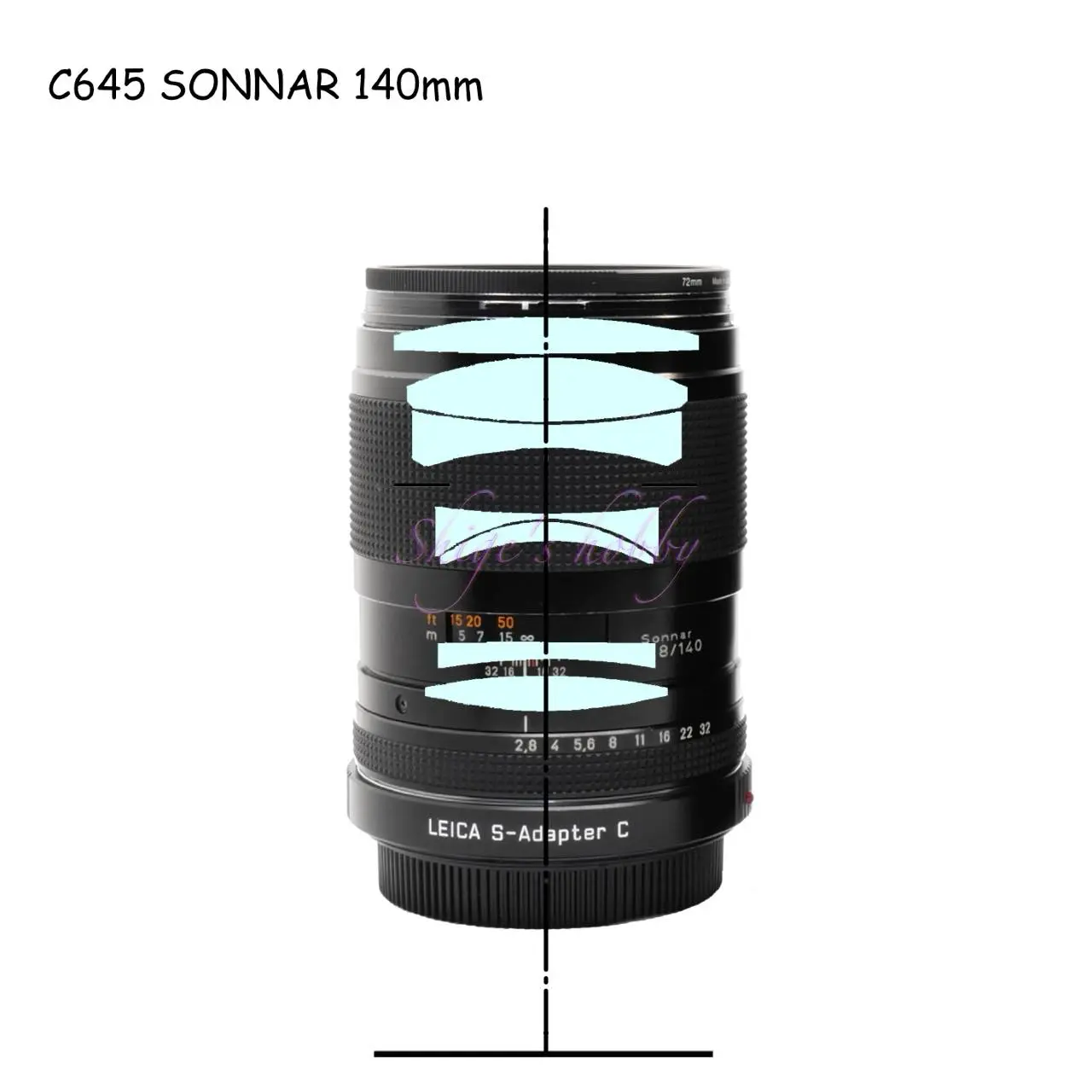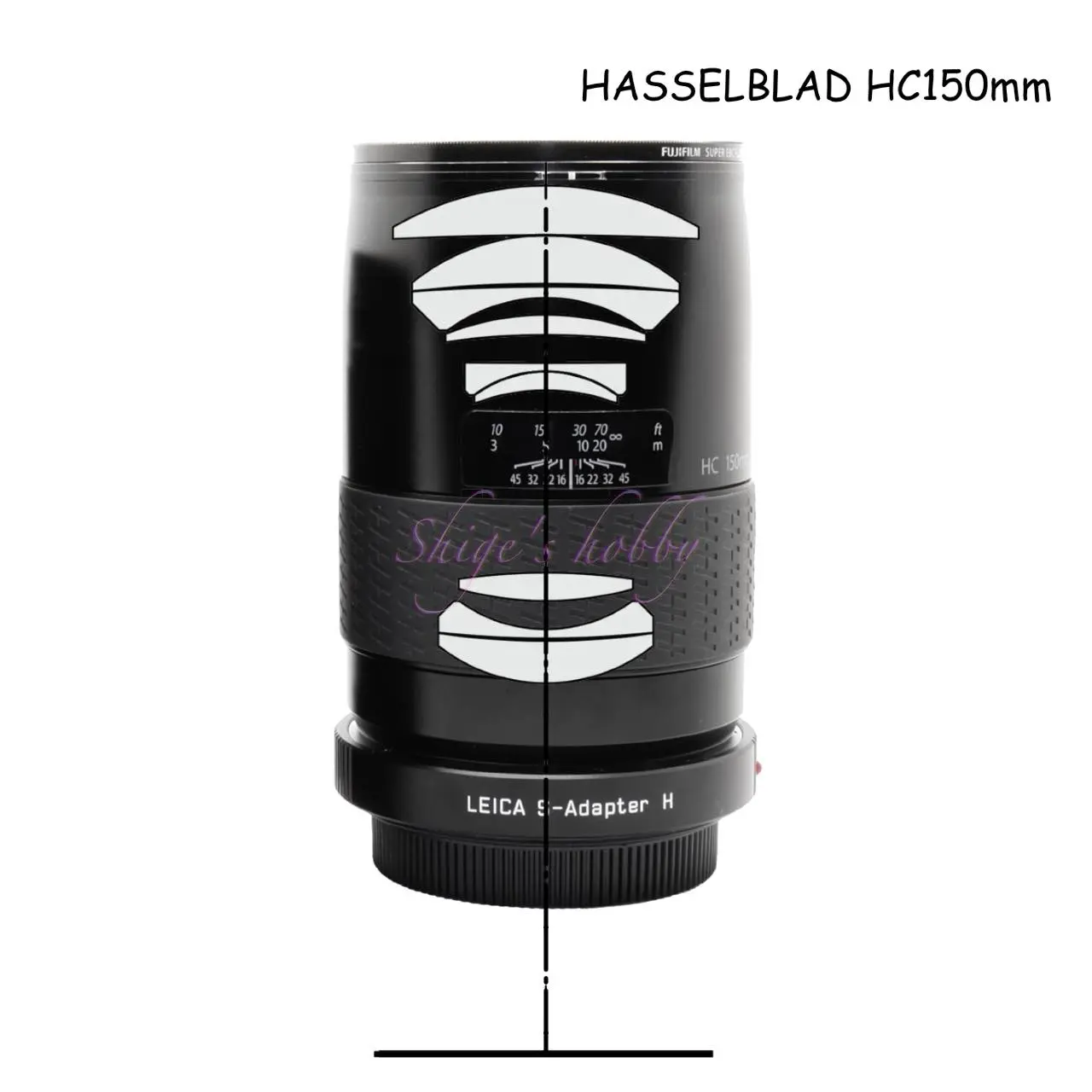Last updated on 2025-09-23
A review and sample photos of the Carl Zeiss SONNAR T* 140mm telephoto lens for the Kyocera Contax 645, used with a LEICA S Typ007.
- Please see the disclaimer regarding advertising here.
- Italicized links in the text are advertisement links that take you to other sites.
Table of contents
Gallery
The sample photos were taken using a LEICA S typ007.Photo example by LEICA S Typ007
Review
1.Overview
The SONNAR T* 140mm is the widest-angle lens for the CONTAX 645, released in 1999.
The lens is made of 7 elements in 5 groups, weighs approximately 700g, and has a filter diameter of 72mm.
The image circle of the lens is compatible with 645 film, so it can easily cover the 45x30mm sensor of the Leica S and the 35mm full-frame sensor.
When used with a Leica S, it is attached via the mount adapter 16038 [Leica S Adapter C]. When used with a Leica S, the aperture ring on the lens is ignored and the aperture value is set on the camera.
Even when using autofocus, the focus ring in the center of the lens can be used to manually interrupt the focus during focusing.
The hood is the GB-73, which is the same as the APO Macro Planar 120mm.
2.Usability
The SONNAR T* 140mm is a medium telephoto lens with a focal length of 140mm released by Kyocera for the medium format camera Contax 645. When used with the Leica S series, the focal length is equivalent to 112mm in 35mm format, and it has a moderate compression feeling and a good front and back bokeh, making it a straightforward image. When used with a Contax 645 film camera, it becomes a portrait lens equivalent to 84mm, as it becomes 0.6 times the 35mm equivalent.
Lenses with a focal length of 140mm are rare in 35mm format, so I was interested in them every time I saw them at a used camera shop. However, since the lens mount is Contax 645, I had no chance to get one for a long time.
I got the 16038 [Leica S Adapter C] for LEICA S, and the Sonnar 140mm was one of the cheap Contax 645 lenses, so I got it and used it.
When used with the LEICA S Typ007, it produces bright, three-dimensional images without any light loss even in the peripheral areas.
The maximum aperture of F2.8 is bright for a medium format lens, and produces beautiful, round bokeh at full aperture.
However, when the aperture is closed, the edges of the aperture blades appear in the bokeh, which can be distracting.
However, the biggest problem with this lens is that it is not good at close-up photography, with a minimum focusing distance of 1.3m. This is almost the same as the minimum focusing distance of the Sonnar 210mm, which has a longer focal length, at 1.4m. To compensate for this, it is possible to use an Auto Extension tube, and by using the optional extension tube for the CONTAX 645, the minimum focusing distance can be shortened as shown in the table below.
| Extension Tube length | Min distance |
| 13mm | 0.9 |
| 26mm | 0.8 |
| 52mm | 0.7 |
Also, when used with a LEICA S, the autofocus speed is slow, and if the subject has low contrast, the autofocus may not focus and may hesitate. The autofocus accuracy is not so good, but the wide focus ring on the lens barrel makes manual focusing easy. You can also interrupt the autofocus by turning the focus ring during autofocus.
The autofocus performance is also a problem on the LEICA S side, so I hesitate to blame the lens alone.
The Sonnar 140mm can also be used with the optional Mutar x1.4, which extends the shooting distance, in which case the focal length is 196mm and the maximum aperture is F4. This specification is almost the same as the Sonnar 210mm F4, so it is not very practical.
It is one of the unpopular lenses on the used market, and if it is in average condition, you can get it for less than 50,000 yen.
The one I have is worn out and does not even have the white dot on the lens.
The appearance of the Sonnar 140mm is very similar to the M42 mount Carl Zeiss Jena MC Sonnar 135mm F3.5, which gives the impression that this lens is also of Zeiss descent.
3.Summary
In conclusion, to sum up the SONNAR T* 140mm for CONTAX 645, the image quality is satisfactory, but the minimum shooting distance is long and it is difficult to use.
It is worth having because it is inexpensive, but the frequency of use will be limited. Its focal length overlaps with the Apo Macro Planar 120mm, a manual focus lens, so if you have the Apo Macro Planar, which can take close-up shots, you may find that you do not need this lens.
Specifications, considerations, etc.
The SONNAR T* 140mm for CONTAX 645 has similar specifications to the Hasselblad HC150mm, so here is a table comparing them. The difference of 10mm in the telephoto focal length is not that great when it comes to image creation. The lens configuration of the Sonnar is simple, with 7 elements in 5 groups, while the HC 150mm has a luxurious configuration of 9 elements in 8 groups.
The Sonnar weighs 688g, while the HC150 weighs 970g, with the HC150 being about 30% heavier. This is thought to be due to the fact that the Hasselblad HC lens has a built-in shutter mechanism and a focal length that is 10mm longer. As can be seen from the comparison in the figure below, the CONTAX 645 Sonnar 140mm is also one size smaller.


| Lens name | CONTAX SONNAR 140 | HASSELBLAD HC 150 |
| Local length(mm) | 140 | 150 |
| Max aperture | 2.8 | 3.2 |
| Min aperture | 32 | 45 |
| Lens Construction | 7elements in 5group | 9elements in 8group |
| Min distance(m) | 1.3 | 1.3 |
| Lens length(mm) | 98 | 124 |
| Lens Max diameter(mm) | 81 | 86 |
| Filter Size(mm) | 72 | 77 |
| Weight(g) | 688 | 1410 |
| Release date | Y 1999 | – |
| Price(Japan-Yen) | Y2023 Uesd ¥50,000〜 | Y2023 Used ¥100,000〜 |
Reference links
Affiliate Link
- CONTAX645・Ads by ebay
- CONTAX 645 lens・Ads by ebay
- Leica 16038 S Adapter C Contax 645 Lens to S System・Ads by ebay
- SONNAR 140mm for CONTAX 645・Ads by ebay
- Mutar x1.4 for CONTAX 645・Ads by ebay
Update history
- 2025.5.15
- 2024.2.11:Update
- 2022.05.31:First draft



Be First to Comment